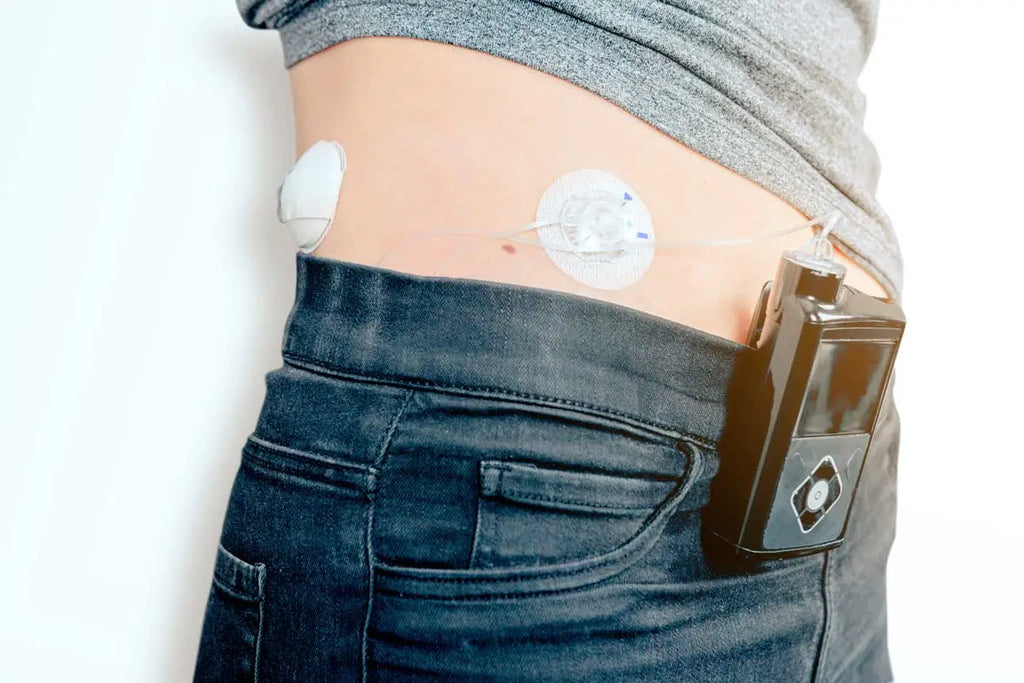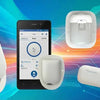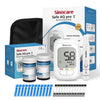The Closed-Loop System for Diabetes
-
Published on
Last updated on

Controlling blood sugar levels artificially, using mechanisms close to the natural human systems, has become possible with the help of modern technology. Diabetes was first diagnosed as a disease that resulted in sweet urine that attracted ants. It was thought to be a flesh melting disease that led to emaciation and premature death. Owing to a lack of knowledge, it was initially treated with exercise and diet changes, but with subsequent research and experimentation, insulin was discovered (1). Today, insulin and other medications such as oral hypoglycaemics have changed the perception and the treatment of diabetes. Thanks to the modern inventions focused on normalising the lives of diabetics, it is now a manageable disease and people can lead a fulfilling life with it. One of such innovations is the use of closed-loop systems for the management of diabetes.
A closed-loop system is a mechanical and electronic device that functions automatically and does not require human input. In other words, it is an artificial feedback mechanism that regulates itself. (2) Closed-loop systems are now being applied to the treatment of diabetes to ensure a normal lifestyle for people with the disease, also known as the artificial pancreas.
Closed-loop systems are applied in the treatment of diabetes using a smartphone app that helps in delivering insulin to the body according to its requirements, which is why it is also called an artificial pancreas. This device comes with a monitor that continuously monitors blood glucose levels and injects insulin accordingly.
A closed-loop system for diabetes essentially has three parts (3)
Children and adults who have type 1 diabetes can benefit from this device as their pancreas can not produce any insulin. They require strict control of their blood glucose levels. Other than type I patients, pregnant women, elderly people and people who have a hard time controlling their blood glucose levels, either due to unpredictable lifestyle, miscalculating insulin levels or those who experience ‘dawn affect' (high blood glucose levels in the morning) can also benefit from this device.
Since it has an in-built mechanism of sensing the blood glucose levels as well as delivering the appropriate amount of insulin, the patient does not have to continuously monitor the sugar levels or administer insulin themselves. Moreover, due to continuous infusion of insulin, blood glucose levels have fewer peaks and remain stable throughout the day. When diabetes is managed efficiently, it leads to a healthier life and significantly reduced chances of developing life-threatening complications such as ketoacidosis, or hypoglycemia, as well as long term complications of diabetes such as kidney failure, diabetic neuropathy and diabetic retinopathy.
Yes, it can be. However, it is advisable to not take it off for precise management of your blood glucose levels all the time.
Yes, as with every other machine, it can have errors and issues of its own. It may turn off if the batteries run out. You will have to replace the batteries. Do have an emergency diabetic kit in case you think it has some issues. You must know how to manually monitor blood glucose levels by pinprick and injecting insulin.
Yes, it is suitable for everyone. Unless you have any issue wearing a piece of equipment on your body.
What Is a Closed-Loop System?
A closed-loop system is a mechanical and electronic device that functions automatically and does not require human input. In other words, it is an artificial feedback mechanism that regulates itself. (2) Closed-loop systems are now being applied to the treatment of diabetes to ensure a normal lifestyle for people with the disease, also known as the artificial pancreas.
The Role of Closed-Loop System in Diabetes:
Closed-loop systems are applied in the treatment of diabetes using a smartphone app that helps in delivering insulin to the body according to its requirements, which is why it is also called an artificial pancreas. This device comes with a monitor that continuously monitors blood glucose levels and injects insulin accordingly.
A closed-loop system for diabetes essentially has three parts (3)
- Continuous Glucose Monitor:
- Insulin Pump:
- The Algorithm:
Who Can Use It?
Children and adults who have type 1 diabetes can benefit from this device as their pancreas can not produce any insulin. They require strict control of their blood glucose levels. Other than type I patients, pregnant women, elderly people and people who have a hard time controlling their blood glucose levels, either due to unpredictable lifestyle, miscalculating insulin levels or those who experience ‘dawn affect' (high blood glucose levels in the morning) can also benefit from this device.
Benefits Of a Closed-Loop System:
Since it has an in-built mechanism of sensing the blood glucose levels as well as delivering the appropriate amount of insulin, the patient does not have to continuously monitor the sugar levels or administer insulin themselves. Moreover, due to continuous infusion of insulin, blood glucose levels have fewer peaks and remain stable throughout the day. When diabetes is managed efficiently, it leads to a healthier life and significantly reduced chances of developing life-threatening complications such as ketoacidosis, or hypoglycemia, as well as long term complications of diabetes such as kidney failure, diabetic neuropathy and diabetic retinopathy.
Useful Tips When Using a Closed-Loop System (3)
- After every meal, one must carefully enter the number of carbohydrates consumed so that the pump can administer insulin accordingly. If for some reason, carbohydrate content is not entered accordingly, it may result in hypo or hyperglycaemia.
- To optimise insulin action and carbohydrate metabolism, pre-bolusing of 10 to 15 minutes is required. In case of late bolus, an episode of hypoglycaemia may occur and a greater amount of insulin may be required.
- A closed-loop system uses an alarm to inform the consumer about changes in blood glucose levels so that they can take appropriate action themselves which may be manually changing the dose of insulin.
- Although the episodes of hypoglycaemia while using a closed-loop system are less frequent as compared to traditional insulin therapy, they are not completely avoidable. However, with this system, less amount of carbohydrate or sugar is required to reverse the hypoglycemia.
- If for some instance, hyperglycemia results, either due to excessive carbohydrates or some other fault in the system, the patient must know how to tackle it. The alarm will alert the patient, but it will take some time for insulin to reverse it. Hence, the patient must receive adequate training to manage it using an insulin pen or by some other means. The dosage assessment must be done precisely by the patient himself.
- It is better to follow a strict diet even while using a closed-loop system. However, strenuous exercise may result in acute changes in blood glucose levels and must be dealt with accordingly.
- Patients using closed-loop systems must have to follow up with their doctors to see if everything is under control, be it the system or the blood glucose levels.
Frequently Asked Questions (FAQs)
Can the machine be taken off?
Yes, it can be. However, it is advisable to not take it off for precise management of your blood glucose levels all the time.
Can it have any issues?
Yes, as with every other machine, it can have errors and issues of its own. It may turn off if the batteries run out. You will have to replace the batteries. Do have an emergency diabetic kit in case you think it has some issues. You must know how to manually monitor blood glucose levels by pinprick and injecting insulin.
Is it suitable for everyone?
Yes, it is suitable for everyone. Unless you have any issue wearing a piece of equipment on your body.
References:
- McCoy, K., & Bass, P. F., III MD. (2009, November 3). The History of Diabetes - Diabetes Center - Everyday Health. EverydayHealth.Com. https://www.everydayhealth.com/diabetes/understanding/diabetes-mellitus-through-time.aspx
- Contributor, T. (2017, December 31). closed-loop control system. WhatIs.Com. https://www.techtarget.com/whatis/definition/closed-loop-control-system
- (2021b, December 3). Closed-loop Insulin Systems for Type 1 Diabetes. London Diabetes Centre. https://londondiabetes.com/news-and-events/closed-loop-insulin-systems-for-type-1-diabetes/





